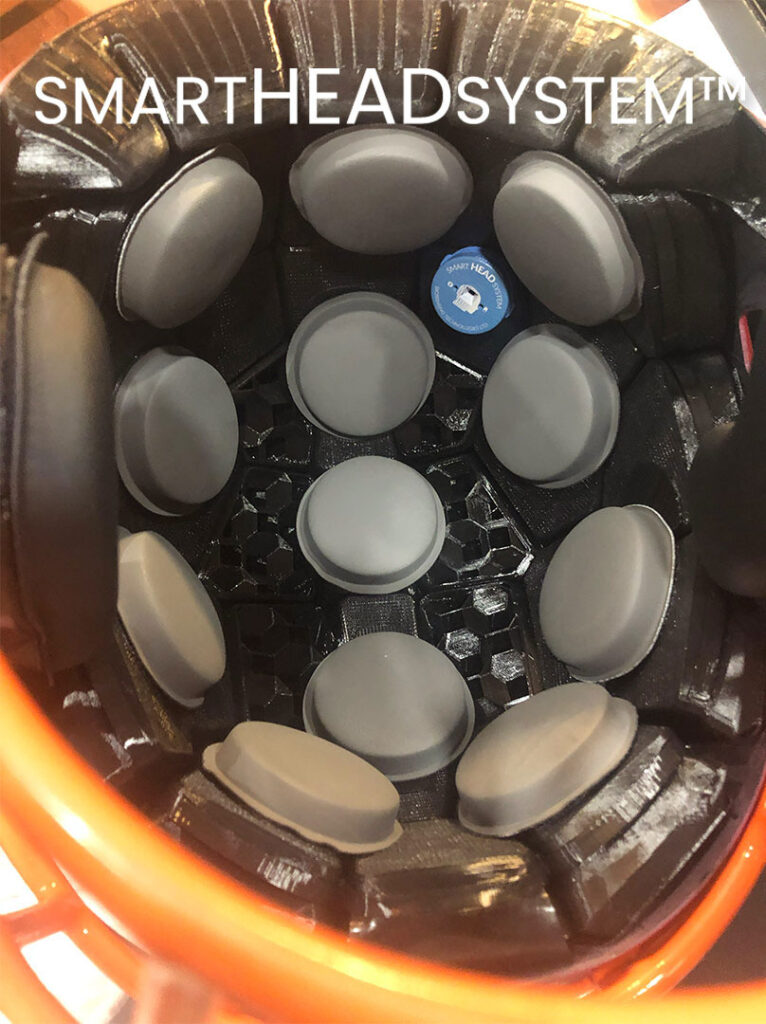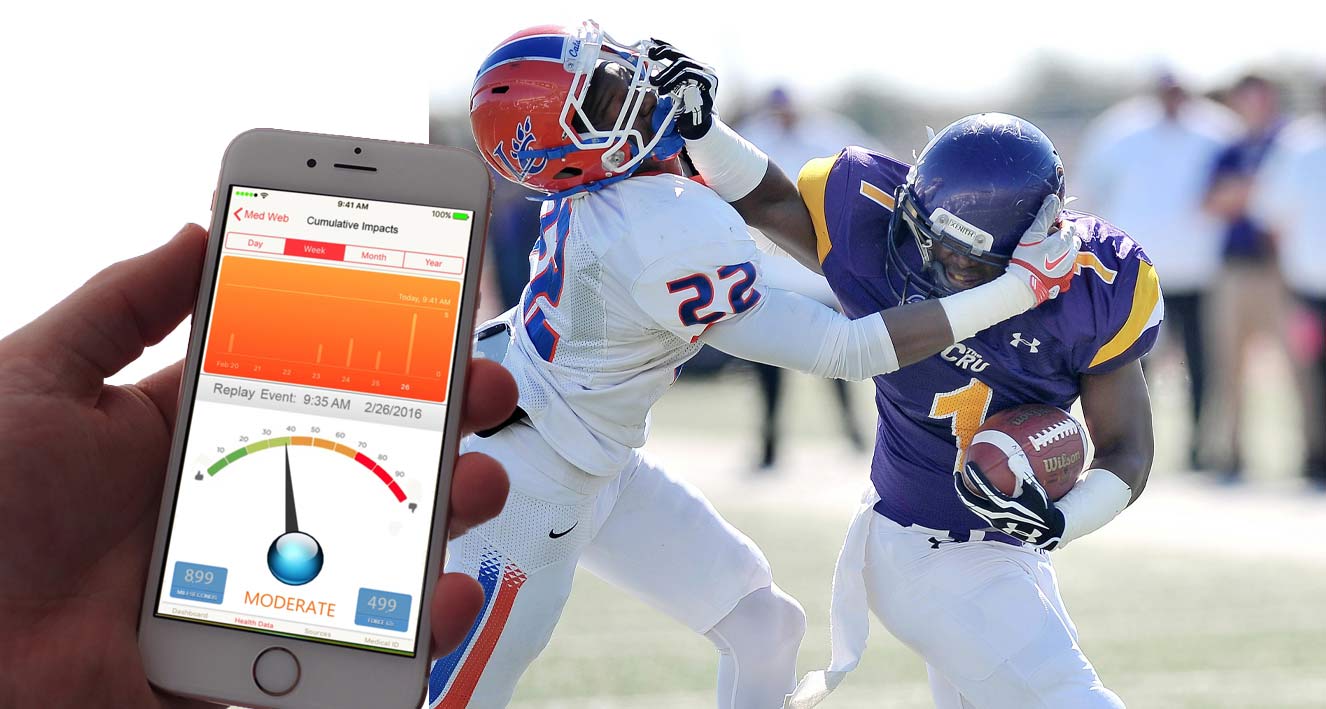Advancements in Helmets and protection have been a staple of protective gear for decades, safeguarding individuals in high-risk activities like sports, construction, cycling, and motorcycling. As technology continues to evolve, so do the capabilities of these essential safety devices. One such cutting-edge advancement in helmet technology is the introduction of bio-sensing systems, exemplified by the SMARTHEADSYSTEM™. This breakthrough technology aims to revolutionize helmet safety by integrating bio-sensing features that monitor and respond to the wearer’s physiological conditions in real-time.
In this blog, we’ll explore how the SMARTHEADSYSTEM™ is setting the stage for a new era of helmet innovation, with the potential to not only prevent accidents but also optimize safety based on individual health data.
What is the SMARTHEADSYSTEM™?
The SMARTHEADSYSTEM™ is an advanced bio-sensing technology embedded within the structure of a helmet. By using a combination of sensors, this system monitors key biological markers of the wearer, including heart rate, body temperature, stress levels, and even brain activity. The information gathered through these sensors is processed in real-time, providing immediate feedback on the wearer’s physical state.
What makes SMARTHEADSYSTEM™ so groundbreaking is its ability to offer a more personalized safety experience. Rather than just protecting the wearer from external impact, it also anticipates potential health risks that could compromise the person’s ability to respond effectively to dangerous situations.
How Bio-Sensing Works in Helmets
At the heart of the SMARTHEADSYSTEM™ is a network of bio-sensors integrated into the padding or outer shell of the helmet. These sensors can track a variety of physiological markers, including:
- Heart Rate Monitoring: The system tracks the wearer’s heart rate, providing an indicator of stress, exertion, or fatigue. If the heart rate exceeds a certain threshold, the system can alert the wearer or activate an automatic safety protocol.
- Temperature Regulation: Sensors detect body temperature, allowing the helmet to adjust ventilation or alert the wearer if overheating is a concern.
- Brain Activity and Impact Detection: Advanced sensors can measure changes in brain waves or detect impacts that might indicate a concussion or other brain injury. This helps determine if the wearer needs medical attention or if they should be removed from dangerous activities.
- Stress and Fatigue Levels: With the ability to measure stress hormones and fatigue levels, SMARTHEADSYSTEM™ can offer real-time advice on when to take a break or seek medical attention. This is particularly useful in high-stakes environments such as extreme sports or in professions like construction.
Why is SMARTHEADSYSTEM™ a Game-Changer?
- Enhanced Safety through Real-Time Monitoring
The primary advantage of integrating bio-sensing technologies into helmets is the ability to monitor the wearer’s health in real-time. Traditional helmets only provide protection against external impacts, but SMARTHEADSYSTEM™ takes it a step further, acting as a personal health monitoring system. By constantly analyzing physiological signals, it provides valuable insights into the wearer’s condition and helps prevent accidents caused by fatigue, stress, or impaired cognition. - Preemptive Risk Mitigation
Bio-sensing technology can be used to assess and predict health risks before they manifest. For example, if the system detects signs of severe fatigue, it could warn the wearer to take a break or alert others to intervene before a potential accident occurs. Similarly, it can notify the wearer when they’re at risk of overheating or if their heart rate is unusually elevated due to extreme exertion. - Smart Notifications and Alerts
Through connected apps or direct feedback in the helmet, SMARTHEADSYSTEM™ can send notifications to the wearer, their teammates, or emergency responders. This could include warnings about excessive heart rate, fatigue, or even a potential head injury. In situations where the wearer may not be able to make rational decisions—due to a concussion or other impact-related injury—having an automated safety system in place could be a lifesaver. - Better Post-Incident Analysis
In the event of a fall or accident, the SMARTHEADSYSTEM™ provides valuable data that can be used to understand what happened and improve safety protocols. The system can record data like impact force, heart rate variability, and brain activity during the incident, helping medical professionals make faster and more informed decisions about treatment. - Wide Applications Across Industries
The SMARTHEADSYSTEM™ has applications in several fields beyond sports and recreational activities. In construction, where workers are often exposed to dangerous environments, bio-sensing helmets can be used to monitor fatigue and ensure that workers are not at risk of accidents due to physical or mental exhaustion. In professional motorsport, bio-sensing helmets can help assess a driver’s cognitive state during a race, providing insights into performance under extreme conditions.

The Future of Helmet Technology
While the SMARTHEADSYSTEM™ is already an impressive step forward, the future holds even greater potential for helmets with integrated bio-sensing technology. As data processing capabilities improve and sensor technology becomes more advanced, helmets could eventually be capable of providing even more detailed insights into the wearer’s health. Future helmets may be able to detect dehydration levels, provide instant feedback on breathing patterns, or even track hydration status in real-time.
In the near future, helmets could become even more connected, syncing with other wearable devices to provide a holistic view of the wearer’s physical state. This could lead to even more sophisticated safety protocols and create a seamless, fully integrated safety system that monitors everything from heart rate and body temperature to brain function.
Conclusion
The SMARTHEADSYSTEM™ represents a groundbreaking advancement in helmet technology, one that focuses on more than just protecting the wearer from external threats. By incorporating bio-sensing capabilities, helmets now have the potential to predict and prevent accidents, monitor health conditions, and provide immediate, real-time feedback to the wearer. With such advancements in safety, the future of helmets looks brighter than ever, and the SMARTHEADSYSTEM™ is leading the charge in making personal protective equipment smarter, safer, and more intuitive.

